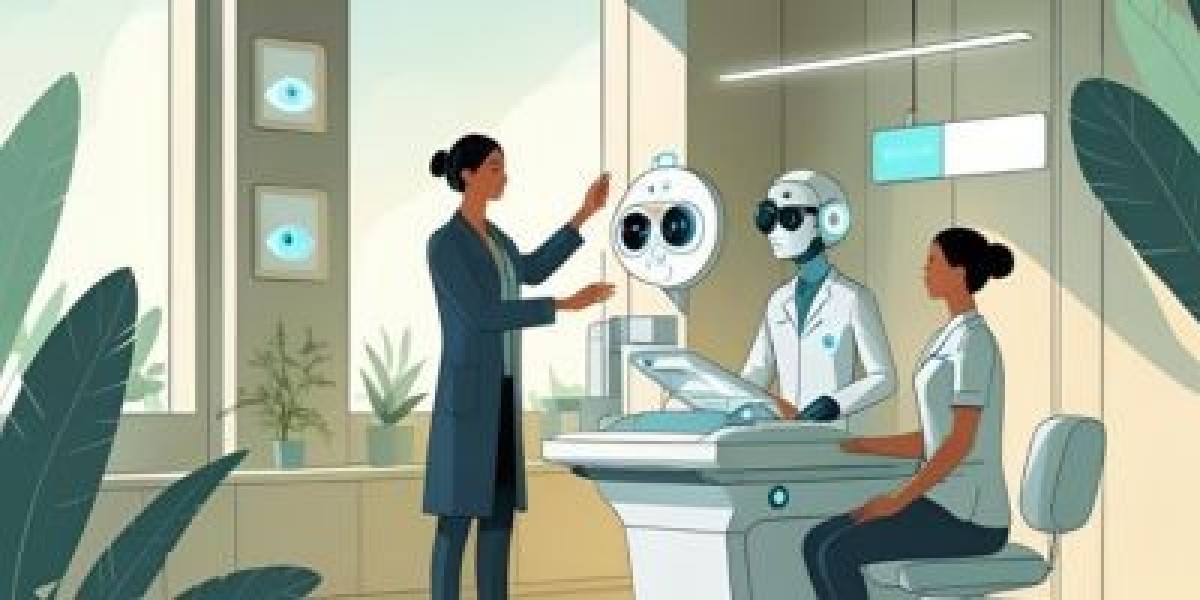The integration of artificial intelligence (AI) into healthcare has brought transformative changes, revolutionizing how patients are diagnosed, treated, and monitored. AI is playing a vital role in enhancing medical research and improving patient outcomes by enabling precise diagnoses and tailored treatment plans. One of its key strengths lies in the rapid analysis of extensive clinical data, allowing healthcare providers to detect disease indicators and patterns that might otherwise go unnoticed.
AI, in essence, involves systems or machines designed to replicate human intelligence. These systems perform tasks and learn from data to continuously refine their capabilities. AI models are built using massive datasets—far beyond what humans can manually process, making them essential for uncovering deep insights. The influence of AI on medical innovation is both profound and growing.
Why Early Detection of Eye Diseases Matters
Vision loss often happens gradually, making it difficult for individuals to notice until the damage is done. By the time symptoms become obvious, treatment options may be limited, and outcomes less favourable. That’s why early detection is critical.
Conditions like diabetic retinopathy, glaucoma, and age-related macular degeneration can be managed effectively sometimes even halted if caught in their initial stages. Early intervention not only preserves vision but can also reduce long-term healthcare costs and improve overall quality of life.
The key challenge lies in identifying subtle signs that traditional screenings may miss. That’s where technology, particularly AI-driven tools, begins to show real promise.
Real-World Applications and Success Stories
AI in eye care isn't just theoretical; it’s already making a difference in clinics and hospitals across the globe. One of the most widely adopted applications is in detecting diabetic retinopathy through retinal imaging. Systems like IDx-DR, which received FDA approval, are being used to scan retinal photos and identify early signs of disease without the need for a specialist on-site.
Around the world, AI tools are helping to screen large populations efficiently, especially in underserved areas where access to specialists is limited. From mobile eye screening units to primary care settings, these technologies are expanding reach and accelerating diagnosis.
Even tech giants are involved. Google Health, for example, has partnered with healthcare providers to improve early detection of eye conditions using deep learning algorithms.
These success stories aren’t about replacing doctors, they’re about equipping them with smarter tools to deliver faster, more accurate care.
Benefits of AI in Eye Care
AI is reshaping the way eye care is delivered, offering support where traditional methods fall short. Here are four key benefits that stand out:
1. Faster Diagnosis
AI tools can process retinal images in seconds, helping clinicians detect signs of disease much earlier than manual methods. This leads to quicker intervention and better patient outcomes.
2. Improved Accuracy
With advanced image recognition, AI systems can spot patterns and subtle changes that may be difficult for the human eye to catch, especially in the early stages of disease.
3. Greater Reach in Underserved Areas
AI-powered screening tools can be deployed in primary care clinics, community centres, or even mobile units, making quality eye care accessible where specialists aren’t available.
4. Reduced Burden on Specialists
By handling initial screenings and flagging only high-risk cases, AI helps reduce the load on ophthalmologists, allowing them to focus on treatment and complex diagnoses.
The Future of AI in Vision Health
The use of AI in eye care is just getting started. As algorithms become more refined and datasets more diverse, we can expect even better diagnostic precision and broader use in everyday clinical settings. Tools will move beyond detection to assist in treatment planning, risk prediction, and even patient education.
We may also see more AI integration into consumer devices, making it easier for people to monitor their eye health from home. Combined with telemedicine, this could redefine how and when people seek care, making prevention more proactive than ever before.
Final Thoughts
The integration of AI into eye care marks a transformative step toward more proactive, accurate, and accessible vision health. From early detection to scalable diagnostics, AI is proving to be a powerful ally in preventing avoidable vision loss and enhancing patient care.
At Expeed, we’re proud to be part of this transformation. With deep domain expertise in healthcare IT and a strong commitment to innovation, our AI-driven solutions are helping providers detect conditions like diabetic retinopathy earlier and with greater precision. Backed by research, regulatory compliance, and real-world success stories, we deliver intelligent tools that empower clinicians, extend care to underserved communities, and improve outcomes across the board.
As we continue to pioneer digital healthcare, we invite you to partner with Expeed where smarter technology meets compassionate care.






